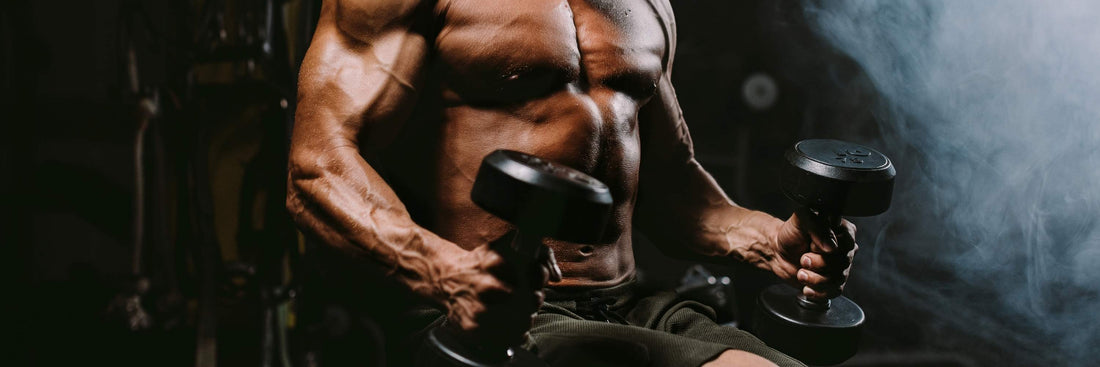
Nucleus Overload Training: A Science-Backed Guide to Maximizing Muscle Growth
What Is Nucleus Overload Training?
Nucleus overload training is a high-frequency hypertrophy method designed to boost muscle growth by increasing myonuclei density within muscle fibers.
By targeting a specific muscle group daily for 30 days with high-repetition, low-to-medium weight exercises—followed by a rest period—this approach aims to stimulate satellite cells (muscle stem cells) to donate nuclei to muscle fibers.
These nuclei enhance the fiber’s capacity for protein synthesis, enabling long-term growth even after training stops.
How Does Nucleus Overload Work?
Muscle fibers are multinucleated, meaning they contain multiple nuclei that regulate protein synthesis. During nucleus overload training you create:
- Microtrauma: High-repetition sets create microscopic muscle damage.
- Satellite Cell Activation: Damage triggers satellite cells to proliferate and fuse with muscle fibers, donating new nuclei.
- Permanent Adaptation: Once added, nuclei remain indefinitely, even during atrophy. A 2010 Journal of Physiology study found muscles retained 33% more cross-sectional area (CSA) after retraining post-atrophy.
Key Mechanism
- mTOR Signaling: Intense volume resets mTOR pathways, enhancing anabolic signaling
- Blood Flow: High reps increase nutrient delivery, aiding recovery and growth.
Benefits of Nucleus Overload Training
- Break Plateaus: Forces adaptation in stubborn muscles (e.g., calves, rear delts).
- Long-Term Growth: Myonuclei persist indefinitely, accelerating future hypertrophy.
- Efficiency: Requires only 5–10 minutes daily per muscle group
- Targeted Development: Ideal for lagging body parts like calves or rear delts.
Risks and Injury Prevention
There are a few common risks to watch out for when doing high-volume training. A 2024 Frontiers in Bioengineering study found that training with heavy volume every day can lead to tendon inflammation due to microdamage.
Overtraining is another concern, often showing up as ongoing soreness, trouble sleeping, and a noticeable drop in performance. To help prevent these issues, it's important to manage your training load—sticking to around 30–50% of your one-rep max (1RM) can ease the strain on your joints.
Supporting your recovery with anti-inflammatory nutrition can also make a difference; boosting your intake of omega-3s (like from fish oil) and curcumin can help lower the activity of inflammation-related enzymes like MMP-13.
Lastly, mobility work matters—add dynamic stretching before your workouts and foam rolling afterward to keep everything moving well and feeling good.
Common Risks
- Tendon Microdamage: A 2024 Frontiers in Bioengineering study linked daily high-volume training to tendon inflammation.
- Overtraining: Symptoms include persistent soreness, sleep disruptions, and performance declines.
Mitigation Strategies
- Load Management: Use 30–50% of 1RM to minimize joint strain.
- Anti-Inflammatory Nutrition: Increase omega-3s (fish oil) and curcumin to reduce MMP-13 enzyme activity.
- Mobility Work: Incorporate dynamic stretching pre-workout and foam rolling post-workout.
Individual Variability: Who Should Try It?
- Genetics: Satellite cell response varies; those with lower baseline myonuclear density may see greater gains. However figuring this out requires a muscle biopsy, which is an invasive procedure to determine whether it would be a suitable exercise for you.
- Recovery Capacity: Adjust rest periods (1–3 weeks) based on soreness and fatigue.
- Lifestyle: Not ideal for athletes in-season or those with high-stress lifestyles.
Alternative Options to Nucleus Overload Training:
Nucleas Overload Training is not the be-all and end-all of all training schedules. Let's look at some alternatives:
Progressive overload focuses on increasing strength and muscle cross-sectional area (CSA), offering the benefit of building maximal strength but typically resulting in slower hypertrophy.
Blood flow restriction (BFR) training emphasizes metabolic stress, allowing for low-load, joint-friendly workouts, though the muscle pumps are often temporary.
Traditional split routines prioritize systemic recovery, promoting balanced development across muscle groups, but they may limit training frequency for each muscle.

How to Do Nucleus Overload Training
If you're a beginner, here is where we'd recommend you start to make the most of it:
Step-by-Step Protocol
- Choose a Muscle Group: Start with smaller muscles (calves, lateral delts).
- Select Isolation Exercises: E.g., calf raises, lateral raises, bicep curls.
-
Daily Training:
- 3–5 sets of 25–30 reps at 30–50% 1RM.
- Rest 30–60 seconds between sets.
- Limit sessions to 5–10 minutes.
- Recovery Phase: Rest the muscle 7–14 days. Resume normal training afterward.
Pro Tips
- Nutrition: Try to get around 30g of protein within a couple hours after your workout to help your muscles grow.
- Cycle Timing: Stick to 1–2 training cycles a year so you don’t burn out or hit a plateau.
In the long run, the muscle nuclei you gain from training are permanent, which is great for sustained growth potential. However, doing too many high-intensity cycles back-to-back can put a lot of strain on your joints and connective tissues, so it's important to manage the load.
A smart way to integrate this kind of training is by pairing it with strength phases—for example, following an 8-week high-volume block with a 6-week strength-focused phase.
This not only helps solidify the gains but also gives your body a chance to recover and adapt more efficiently.
Nucleus overload training is a potent tool for targeted hypertrophy, backed by emerging science on myonuclear biology. While it carries risks like tendon strain, strategic implementation—coupled with anti-inflammatory practices—can unlock lasting growth. For best results, use it sparingly to address lagging muscles, then return to balanced programming.
Level Up Your Workout with TBo's Utility Boxer Briefs
Don’t let discomfort or lost keys get in the way of your gains. TBo’s Utility Boxer Briefs are built for movement — made from ultra-soft, breathable bamboo fabric that keeps you cool, dry, and odor-free, even during your toughest sessions.
With a hidden pocket and secure key loop, your essentials stay safe and out of mind, so you can stay focused on your grind.
Grab your pair now and feel the difference every rep, every mile, every drop of sweat.










